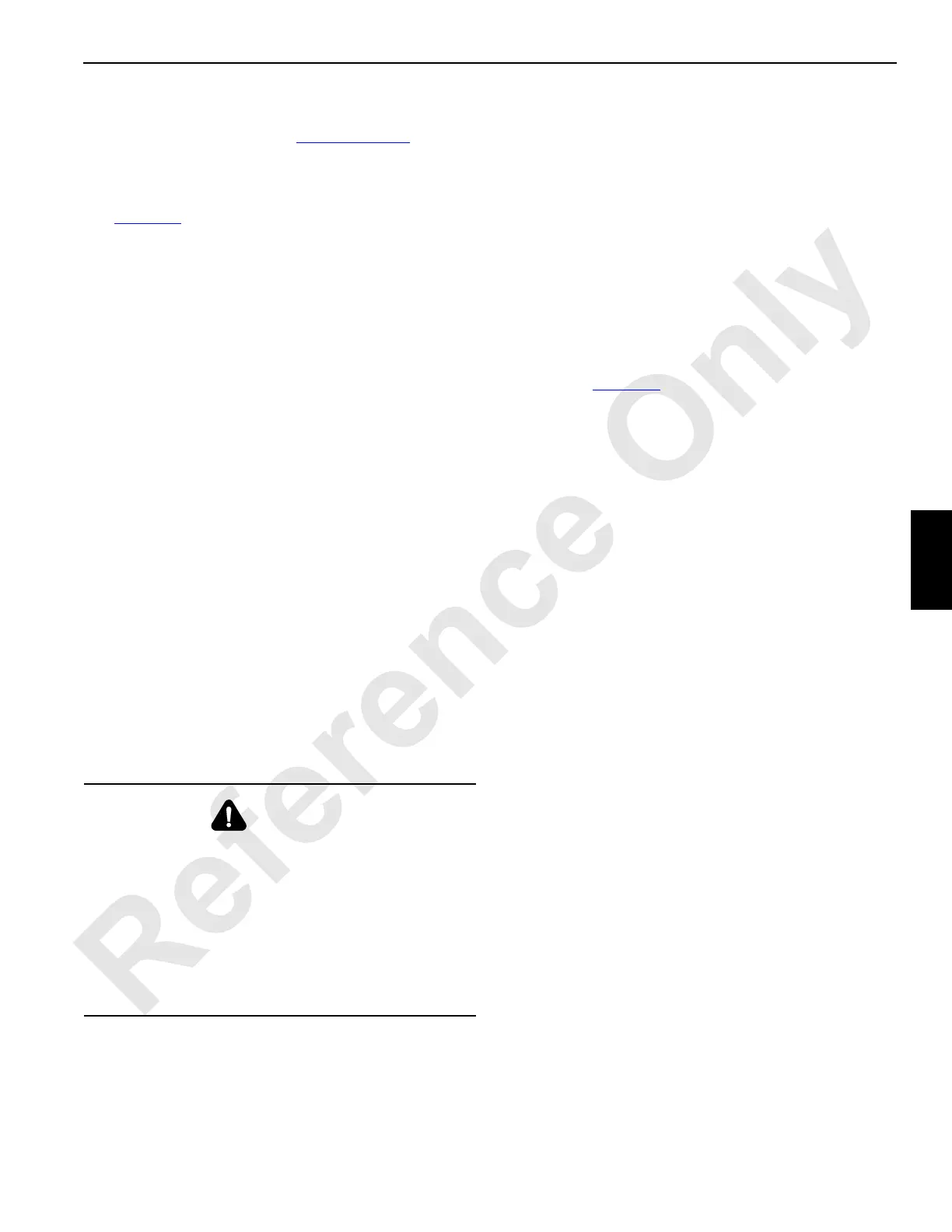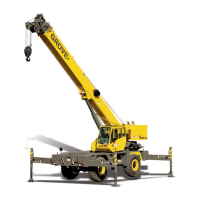Manitowoc Published 07-19-16, Control # 249-01 5-3
2250 SERVICE/MAINTENANCE MANUAL HOISTS
Electrical Wiring
See the electrical schematics in Electrical System Section 3
for proper wiring of the limit switch.
Adjusting the Minimum Bail Limit
See Figure 5-1 for the following procedure.
1. Loosen the lock nut (7) and turn the adjusting screw (8)
up as far as possible.
2. Pay out the wire rope from the drum (4) until the
rollers (2) are against the drum lagging with three to four
wraps of wire rope remaining on the drum.
3. Turn the adjusting screw down against the limit switch
roller (6a) until the limit switch (6) “clicks open,” then
stop.
4. Spool six to seven wraps of wire rope onto the drum, and
then pay out the wire rope.
5. The drum must stop when the rollers are against the
drum lagging with three to four wraps of wire rope
remaining on the drum.
If necessary, turn the adjusting screw in or out slightly
and recheck the adjustment.
6. Securely tighten the lock nut against the mounting
bracket (5) to lock the adjustment.
7. Adjust the eyebolt (10) so the return spring (9) has
sufficient tension to hold the rollers snugly against the
bare drum.
ADJUSTING THE BLOCK-UP LIMIT
CONTROL
General
The block-up limit control (also called an anti-two blocking
device) is a two blocking prevention device that
automatically stops the load drum from hoisting and the
boom from lowering when a load is hoisted a predetermined
distance. It is designed only to assist the operator in
preventing a two blocking condition. Any other use is neither
intended nor approved.
Two blocking is an unsafe condition in which the load block
or the weight ball contacts the sheave assembly from which
either is suspended.
The block-up limit controls must be installed according to the
Boom Wiring, Limits, and Load Indicator Electrical Assembly
drawing in the Operator Manual.
The block-up limit control consists of the following
components (Figure 5-2
):
• A normally closed limit switch assembly (2) fastened at
any or all of the following locations (multiple limit
switches are wired in series):
- Lower boom point (3)
- Upper boom point (standard or extended) (1)
- Fixed jib point
- Luffing jib point
• A weight (6) freely suspended by a chain (5) from each
limit switch actuating lever (weight encircles load line)
• A lift block (7) clamped to the single-part load line or a lift
plate (9) fastened to a multiple-part load block (10)
For detailed drawings of the limit switch locations, see the
Boom Wiring and Limits Drawing in the Operator Manual.
Block-Up Limit Control Operation
During normal operation, the weight overcomes the spring
force and rotates the actuating lever away from the limit
switch lever. This action allows the limit switch to close the
Load Drum Up and Boom/Luffing Jib Down electrical circuits.
The load can be hoisted, and the boom/luffing jib can be
lowered.
When the weight is lifted by the lift block or lift plates, spring
force rotates the actuating lever against the limit switch lever.
This action causes the corresponding limit switch to open the
Load Drum Up and Boom/Luffing Jib Down electrical circuits.
The load drum and boom hoist pumps stroke to off. At the
same time, the load drum and boom/luffing jib park brakes
apply to stop the load drum from hoisting and to stop the
boom/luffing jib from lowering.
WARNING
Two Blocking Hazard!
Two blocking can result in failure of sheaves and wire
rope, possibly causing the load to fall resulting in death or
serious injury.
The block-up limit control may not prevent two blocking
when a load is hoisted at the maximum single line speed.
The operator shall determine the fastest line speed that
will allow the block-up limit control to function properly
and, thereafter, not exceed that line speed.

